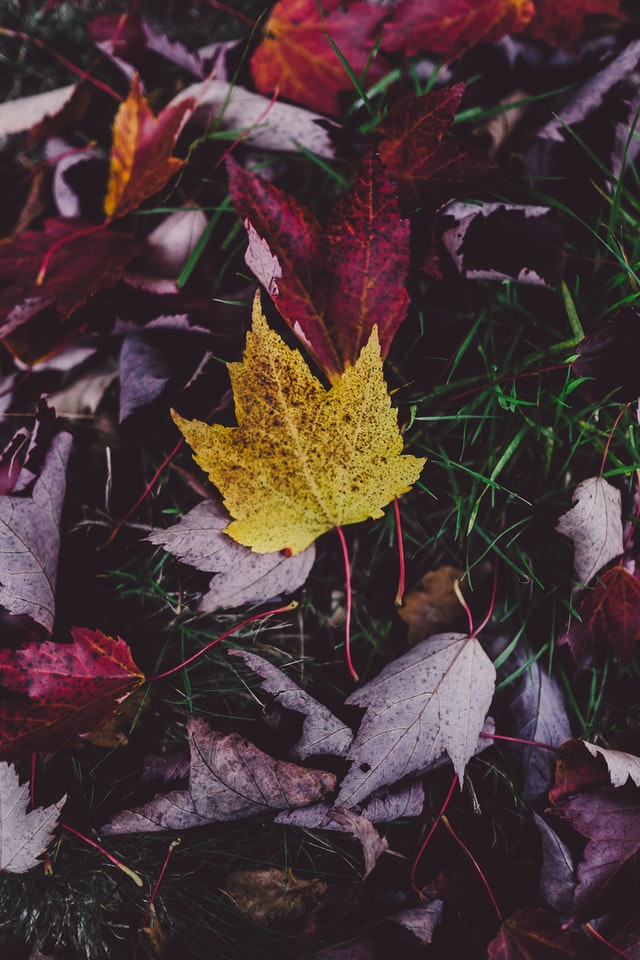by Senior Education Specialist Judy Elliott
November in Denver is a time of varying degrees of temperature change and precipitation, with temperatures ranging from daytime highs of almost 60 at the beginning of the month, to the mid-40s by the month’s end. Nights are chilly, gradually cooling from the low 30s to the high teens, with daylight hours rapidly shortening. The possibility for snowfall increases with several inches expected during the month, although there have been years in which blizzard conditions have occurred.
The last fall leaves blanket the ground with a welcome cover, reminding us to use their bounty to mulch our garden beds, surround our perennials, shrubs and trees with a protective coat, and appreciate the importance of slowing down and gathering together. It is not the season of ‘doing’, but developing deeper roots. We are gently reminded to share.
S | Show up for the earth and others.
- Make sure that all garden beds are protected from the effects of erosion by covering them with fall leaves, straw, and/or cover crops
- Renew and restart compost piles utilizing disease-free end of garden crops, fall leaves, and non-meat food scraps
- Utilize extra fall leaves as part of the indoor bedding mix for red wiggler worms (vermicomposting). This provides an easy-to-manage system for creating nutritionally-rich amendments for spring gardens and houseplants
- Extend a helping hand to others in your community by sharing garden skills, recipes, and seeds
H| Harvest hope.
- Concentrate on the successes of the season, realizing that gardening is a process, not a race
- Make a plan to peruse your community and/or home garden on a regular basis, noticing different microclimates that can be utilized for customized growing
- Leave seedheads on perennial flowers as sources of winter food for songbirds and habitats (leave the dead stems until spring) for overwintering beneficial insects
A | Arrange tool areas + tools.
- An often neglected task during the off season involves arranging your tool storage areas and making sure tools are in good working condition for the upcoming season
- Store shovels and hoes off the floor to prevent rust accumulation & dull edges
- Remove caked-on soil, oil any wooden surfaces with a thin coating of linseed oil
- Garden centers offer end-of-season sales on that ‘must have’ pruner or other too essential. Tools make great gifts for yourself or friends
R | Revisit spring plans.
- Resolve to garden ‘smarter, not harder’ by establishing set internal pathways for feet to show up on a regular basis
- Plan for season wide usage of gardening areas, incorporating flowers and herbs that welcome beneficial insects and nurture your spirit
- Grow what you love to eat, or can share
E | Ease into the season.
- Learn from the trees and perennials, that concentrate on developing deep roots
- Consider regular get-togethers, either in person or virtually with gardener friends, to solidify lessons learned, share meals, decide upon shared tasks for the upcoming season
- Grow a few houseplants to keep the ‘green connection’ growing, increase oxygen levels in your home and realize that you are a key part of our caring for the earth
Don’t forget that you can also save seeds from your final harvests for next year!
Enjoy this short video about how to save seeds from your dying flowers for use in your garden next year.
Quick Garden Tip: Successful Seeds
Prior to planting season, spend a bit of time checking seed viability (their ability to germinate successfully). Seeds such as lettuce and onions generally germinate poorly after several years of storage.
Do an easy test to check for seed germination:
-
- Spread 10 lettuce or onion seeds out on a double layer of moistened paper towels. Space them evenly in 1 row on top of the towel
- Roll up paper towel & place in a ziplock bag, keeping the bag in a cool, dark area
- Each day, carefully remove the ‘seed towel’, unroll & lightly blow on it, releasing carbon dioxide that encourages germination
- After around 6 – 8 days, if at least 6 seeds have germinated (60% rate), the seed variety is ‘safe’ to plant for the upcoming season.




